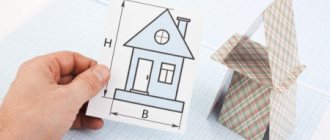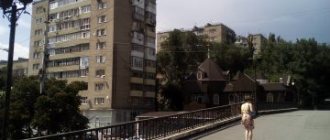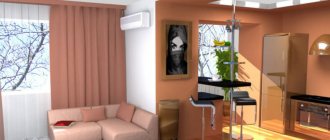Pravozhil.com > Housing and communal services issues > HOA > Basic rights and obligations of the owner of residential premises in an apartment building
Being the owner of an apartment in an apartment building, you have to accept the conditions of cohabitation.
And it’s not just about personal convenience and anxiety from noisy neighbors. Each such owner has the right to use his housing and common property in the apartment building. However, he also has certain responsibilities.
We will talk further about what the responsibilities of the owner of a residential premises in an apartment building are.
Responsibilities of the owner of residential premises in an apartment building - what does the law say?
Legislation on owners of premises in an apartment building
General rules on property rights are contained in the Civil Code of the Russian Federation. Each owner is allowed to use and dispose of their housing as they please.
However, at the same time, he should not forget about the interests of other persons, in particular, neighbors.
In addition, you need to maintain your own property and make the necessary expenses for this. The rights to residential properties are discussed in more detail in the Housing Code of the Russian Federation.
Article 30 of the said code lists the rights and obligations of all owners of such property. According to their meaning, the disposal of one’s own housing should not negatively affect neighbors, the apartment itself, or the general property of the house.
Provisions similar in meaning are contained in the “Rules for the use of residential premises” (approved by Decree of the Government of the Russian Federation of January 21, 2006 No. 25).
All residents of high-rise buildings should not allow the destruction of their apartments, property of the house, disturb the peace of neighbors, or commit other actions that are contrary to accepted laws.
List of common property of an apartment building
Home \ Information for residents \ List of common property of an apartment buildingThe composition of common property in an apartment building is determined:
a) owners of premises in an apartment building (hereinafter referred to as the owners of premises) - in order to fulfill the obligation to maintain common property; b) government bodies - for the purpose of monitoring the maintenance of common property; c) local government bodies - for the purpose of preparing and holding an open competition for the selection of a management organization in accordance with Part 4 of Article 161 of the Housing Code.
Composition of common property in an apartment building
Common areas
| Enclosing load-bearing and non-load-bearing structures | |
| • Inter-apartment landings • Stairs • Elevators • Elevator and other shafts • Corridors • Wheelchairs • attics • Technical floors • Technical basements • Roofs | • Foundations • Load-bearing walls • Floor slabs • Balcony and other slabs • Load-bearing columns • Windows • Doors • Railings • Parapets • Other enclosing load-bearing and non-load-bearing structures |
| Mechanical, electrical, plumbing and other equipment located in a given house outside or inside the premises and serving more than one room |
| The plot of land on which this house is located, with elements of landscaping and landscaping |
| Other objects intended for the maintenance, operation and improvement of this house, located on the specified land plot |
When determining the composition of common property, information on rights to real estate objects that are common property contained in the Unified State Register of Rights to Real Estate and Transactions with It (hereinafter referred to as the Unified State Register), as well as information contained in the state land cadastre, is used.
In the event of a discrepancy (contradiction) in information about the composition of common property contained in the Unified State Register, documentation of state technical accounting, accounting of managers or other organizations, technical documentation for an apartment building, the information contained in the Unified State Register takes priority.
The common property includes in-house engineering systems of cold and hot water supply and gas supply, consisting of risers, branches from the risers to the first shut-off device located on the branches from the risers, the said shut-off devices, collective (common house) cold and hot water metering devices, first shut-off devices - control valves on the outlets of intra-apartment wiring from risers, as well as mechanical, electrical, sanitary and other equipment located on these networks.
The common property includes an intra-house heating system, consisting of risers, heating elements, control and shut-off valves, collective (common house) heat energy metering devices, as well as other equipment located on these networks.
The common property includes an in-house power supply system, consisting of incoming cabinets, input distribution devices, protection, monitoring and control equipment, collective (common house) electrical energy metering devices, floor panels and cabinets, lighting installations for common areas, electrical installations for smoke removal systems , automatic fire alarm systems of internal fire-fighting water supply, freight, passenger and fire-fighting elevators, automatically locking devices for the doors of the entrances of an apartment building, networks (cables) from the external border established in accordance with paragraph 8 of the Rules, to individual, common (apartment) electrical metering devices energy, as well as other electrical equipment located on these networks.
The external boundary of electricity, heat, water supply and sewerage networks, information and telecommunication networks (including wired radio broadcasting networks, cable television, fiber optic networks, telephone lines and other similar networks) included in the common property, unless otherwise established legislation of the Russian Federation, is the outer boundary of the wall of an apartment building, and the limit of operational responsibility in the presence of a collective (common building) metering device for the corresponding utility resource, unless otherwise established by agreement of the owners of the premises with the utility service provider or resource supplying organization, is the connection point of the collective (common building) device metering with the corresponding utility network included in the apartment building. The outer boundary of the gas supply networks that are part of the common property is the point of connection of the first shut-off device with the external gas distribution network.
The land plot on which the apartment building and other real estate objects included in such a building are located, which was formed before the entry into force of the Housing Code of the Russian Federation and in respect of which state cadastral registration was carried out, passes free of charge into the common shared ownership of the owners of the premises in the apartment building.
Cleaning and cleaning of land plots that are not part of the common property, as well as landscaping of the territory and maintenance of landscaping elements located on such land plots, are carried out by the owners of the corresponding land plots.
Information about the composition and condition of the common property is reflected in the technical documentation for the apartment building. Technical documentation for an apartment building includes:
a) documents of technical accounting of the housing stock, containing information about the condition of common property; b) documents (acts) on acceptance of work results; c) certificates of inspection, checking the condition (testing) of utilities, metering devices, mechanical, electrical, sanitary and other equipment serving more than one room in an apartment building, structural parts of an apartment building (roof, enclosing load-bearing and non-load-bearing structures of an apartment building, objects located on a land plot and other parts of common property) for compliance of their operational qualities with established requirements; d) instructions for the operation of an apartment building in the form established by the federal executive body exercising the functions of developing state policy and legal regulation in the field of construction, architecture, urban planning and housing and communal services (for houses put into operation after July 1, 2007 ).
Other documents related to the management of an apartment building include:
a) a copy of the cadastral plan (map) of the land plot, certified by the body carrying out the activities of maintaining the state land cadastre; b) an extract from the Unified State Register containing information about registered rights to real estate objects that are common property; c) a copy of the urban planning plan of the land plot certified by the authorized body of local self-government in the established form (for apartment buildings, the construction, reconstruction or major repairs of which were carried out on the basis of a building permit obtained after the Government of the Russian Federation established the form of the urban planning plan of the land plot); d) documents indicating the content and scope of the easement or other encumbrances, with the attachment of a plan certified by the relevant organization (body) for state registration of real estate objects, on which the scope and boundaries of the easement or other encumbrances relating to part of the land plot are marked ( if there is an easement); e) design documentation (copy of design documentation) for an apartment building, in accordance with which the construction (reconstruction) of an apartment building was carried out (if available); f) other documents related to the management of an apartment building, the list of which is established by a decision of the general meeting of premises owners.
Technical documentation belongs to the owners of premises in an apartment building. Under a management agreement for an apartment building, it is advisable to entrust the management organization with storing and updating technical documentation.
In the event of a change in the method of management or management organization, the previous management organization, thirty days before the termination of the management agreement for an apartment building, is obliged to transfer technical documentation for the apartment building and other documents related to the management of such a house to the newly selected management organization, homeowners' association or housing cooperative or other specialized consumer cooperative or in the case of direct management of such a house by the owners of the premises in such a house, one of these owners indicated in the decision of the general meeting of these owners on the choice of the method of managing such a house, or, if such an owner is not indicated, any owner of the premises in such a house.
Rights of homeowners in apartment buildings
What are the rights of apartment building residents?
What are the rights of homeowners in an apartment building? The most important advantage of owning your own home is the ability to freely use it, as well as own it and, of course, dispose of it.
Owners can live in their own apartment, place their family and other people in it on the basis of contracts. They also own a share in the general wealth of the MKD and can use it.
In addition, they have the right to participate in decision-making at the general meeting of apartment building residents.
And like all residents of the house who pay for housing and communal services, they have the right to receive services of normal quality from housing and communal services organizations. And if they are dissatisfied, they can complain to the appropriate authorities.
Who is responsible for the MOP
Art. 210 and Art. 39 of the Housing Code, place responsibility for the maintenance of common property on the owners of residential premises. They are the ones who bear financial responsibilities.
The scope of each owner's responsibilities is proportional to his share in the common ownership, and it, we recall, is determined by the size of his home. That is, the larger the living space of a particular owner, the greater his share in the care of common property. Consequently, the maintenance of residential premises in the housing and communal services receipt is a value tied to the area of the apartment.
In accordance with the Rules for the maintenance of common property in apartment buildings, owners, by joint agreement, have the right, with some exceptions, to independently provide care and carry out repairs to common property.
Learn more about how an apartment building is directly managed.
In addition, the management, operation and maintenance of an apartment building are often entrusted to third parties, based on the chosen management method. By general decision of the owners, this can be:
- homeowners association (HOA);
- housing construction cooperative (HBC);
- other specialized association of owners.
There is another option: services for the maintenance and repair of common property are provided by a specially created management company. As a rule, these are old housing offices or their updated forms.
To ensure transparent cooperation with them, find out more about what the rights and responsibilities of an apartment building management company include.
Responsibilities of homeowners in apartment buildings
The owner of the premises bears a certain responsibility. First of all, all residents of the building are required to use their apartments exclusively for living. It is prohibited to use them for other purposes that do not correspond to the purpose of these objects.
For example, you cannot set up a chicken coop or a nightclub in your apartment. The responsibilities of owners of their own apartments also include their proper maintenance.
The condition of the apartment should not pose a threat to its residents themselves, as well as their neighbors. The apartment must be repaired in a timely manner; illegal alterations and other actions leading to the destruction of the property are not allowed. The use of housing should not violate anyone's interests.
In addition, it is important to comply with all established standards for sanitary, fire and environmental safety. It is also obligatory to make timely payment of all housing and utility payments for your apartment and share in the common property of the house.
Responsibility of the management company
The duties of the management company and its responsibilities are also reflected in the Rules for the provision of utility services. They establish the responsibility of housing and communal services authorities for poor quality provision of utility services and failure to perform the work assigned to them, both by contract and by the legislation of the Russian Federation.
- If facts of improper maintenance of the property of the owners are revealed, the legal organization can say goodbye to 50 thousand rubles. If a violation of the standard for providing residents with resources was detected, the fine will be 10 thousand rubles.
- Article 44 of the Civil Code of the Russian Federation establishes liability for actions or inactions of authorized persons that led to damage to common property and harm. In this case, all losses incurred by the residents are transferred to the management company.
- Violation of fire safety rules may result in administrative liability. In this case, the management company will lose up to 200 thousand rubles.
This is important to know: How to invalidate the minutes of the general meeting of owners
The list of work that is the responsibility of the management company is very large. Their knowledge will help relieve tension between residents and housing and communal services representatives.
What is included in the common property of an apartment building?
The concept of common property of owners of apartment buildings
For many, the common property of a multi-storey building is a very abstract concept.
Not everyone knows what exactly this applies to. In fact, the places, equipment, and technical equipment used by all residents of the house and necessary for its operation as a whole are recognized as common.
In other words, everything outside the apartments is common.
Common ones include:
- staircases, corridors;
- elevators;
- attics and basements;
- other non-residential premises;
- house electrical networks;
- engineering networks and equipment;
- land under the house.
Why is it necessary to distinguish personal from common property?
It is not without reason that the legislator clearly defines the provisions on the composition of the joint property of residents. Why is this done? You can dispose of your own housing at your own discretion, while shared housing only with the consent of all co-owners.
The distinction helps determine how much to bear the costs of maintaining a particular property. Owners pay and are responsible for their own.
They chip in together for the maintenance of the common. Therefore, delimitation helps to divide the areas of responsibility of each tenant in relation to various property objects.
Is the decision of the general meeting binding?
Based on the results of consideration of the issues raised at the meeting of MKD owners, they make a decision. To do this, everyone present must vote.
It usually requires the votes of a majority of residents to pass. The progress of the meeting itself should be recorded in the minutes, and the agreements reached should be reflected in the decision.
This document is official and binding. This is directly stated in Art. 46 Housing Code of the Russian Federation. If decisions are made correctly without any violations, then they need to be implemented even by those who were not present at the meeting itself.
However, such persons have the opportunity to appeal this decision if they consider it a violation of their rights. In cases where there is only one owner in the house, he makes all decisions himself.
Regardless of the reasons for using an apartment in an apartment building, all residents must respect the interests of their neighbors and the established standards of living in apartment buildings.
Residents-owners, in addition to the rights to their housing, also acquire certain responsibilities. Failure to comply may result in unfavorable consequences for apartment owners, including eviction.
You can learn about some of the rights and responsibilities of apartment building owners by watching the video:
See also Phone numbers for consultation 03 Dec 2020 kasjanenko 569
Share this post
Discussion: there is 1 comment
- Irina says:
08/08/2020 at 09:24How often should homeowners' meetings be held? If there are municipal apartments in an apartment building, then those living in them do not have the right to participate in meetings?
Answer
Functions
Having dealt with all the laws and regulations that establish the rights and obligations of the management company , it is worth clearly understanding what is still included in the organization’s obligations and what is not :
- Service
The responsibilities of the management company include hiring organizations that specialize in such activities. When hiring, the company enters into a contract with her.
The management company is not obliged to carry out this activity. She only hires a service company and controls its work in a particular house.
This is important to know: Complaint against the chairman of SNT to the Prosecutor's Office: sample
Repair work
This obligation is specified in the management agreement and in Article 161 . The management company is obliged to carry out work to preserve the condition of a particular property and improve .
This item also includes:
- Control over the provision of public services ;
- Control over their payment ;
- Organization of repair work ;
- Maintaining the safety and security of an apartment building.
- Public utilities

The management company must provide residents with utility services by concluding contracts with resource supply organizations, monitor their quality and timely payment .
We recommend reading the article on how to correctly recalculate utility bills during your absence.
Caring for the local area
The organization must monitor the local area , as well as carry out cleaning , landscaping and improvement . This is governed by the terms of the agreement between the residents and the management company . Technical control
The organization is obliged to monitor the quality of operation of metering devices , other equipment and communications systems . It is also necessary to carry out their repairs and other work aimed at maintaining them in proper condition . Recalculation
Recalculation is more a right than an obligation of the management company. However, the organization is still obliged to recalculate tariffs and the cost of services provided to residents . Financial support
The management company can and should receive financial support for carrying out repairs and maintenance of the common property of apartment owners. the residents themselves provide such funds .
to contents









